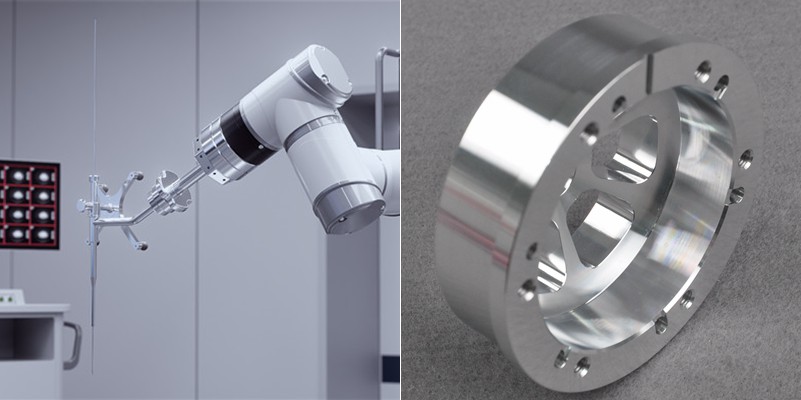- December 15, 2023
Given robot’s ability to perform precision work, there has been a growing demand and dependence in the medical sector. Surgical Robots are designed to aid surgeons and medics, enhancing surgical procedures. Better and more precise surgeries can be performed in less time through robot-assisted surgery.
This article discusses key requirements that need attention during the machining and production of surgical robotic parts. We also provide a case study for typical machined surgical robot components and list the applications of custom robots in the medical industry.
Custom Machined Robot-Assisted Device Examples
There are several types of surgical robots have been developed, all directed at different applications. They are used to enhance existing surgical treatments or robotic implant placement. A few assisted robotic examples are as follows.
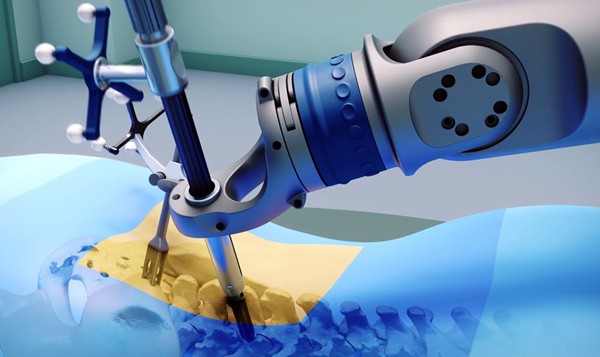
Orthopedic Implants
Orthopedic implants are a type of robotic surgery equipment, mainly designed to replace a bone or a joint in the human body. Examples include hip replacement, knee replacement, etc. For each of these implants, the dimensions and tolerances need to be very precise, given their diverse uses. The dimensional requirements differ from patient to patient. For each user, these implants may be custom-machined using precise CNC machines, including CNC milling, EDM machining, etc.
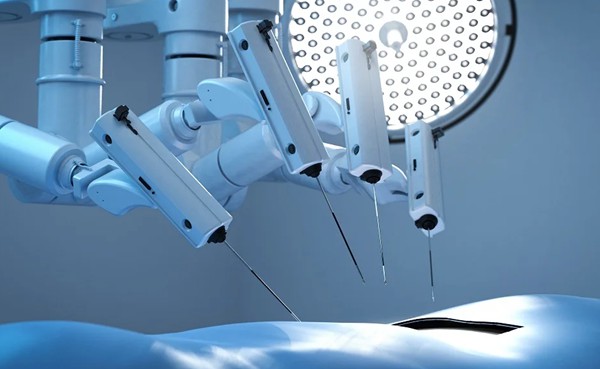
Surgical Robot
Surgical robots have transformed many medical interventions, offering heightened precision and improving minimally invasive operations across various specialties. In surgeries, these robots contribute significantly to existing procedures and facilitate the precise placement of robotic implants. For example, in abdominal surgeries, surgical robots play an important role in implanting, ensuring the exact fit implants for each patient.
Life Science, Research, and Laboratory Equipment
In the life sciences and laboratory research industry, machined robot-assisted devices contribute to advancements in experimental procedures and data collection. For instance, robotic arms equipped with specialized tools assist researchers in delicate tasks such as sample handling and analysis. These custom robot devices can be built to exact specifications using CNC machining techniques, enhancing efficiency and accuracy in laboratory processes.
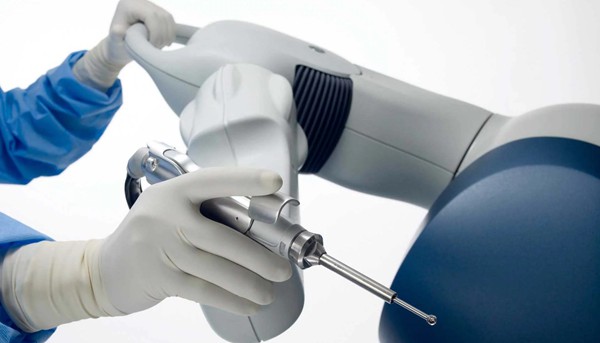
Dental Robotics
Like exoskeleton robots, dental procedures have also benefited from assisted robotic devices. Robotic systems are employed in various aspects of dentistry, ranging from tooth implant surgeries to precise tooth preparations. These dental robot systems aid dental professionals in achieving optimal results while minimizing patient discomfort and recovery time.
Robot Imaging Components
Extremely relied upon by medics and surgeons during robot-assisted surgery, these medical imaging devices provide a magnified image of the area of interest, making the tiny, intricate parts of the human body easy to view. Very precise functioning is required by these devices. To achieve this, CNC machines are used for the precise manufacturing of each such component.
How Precision Machining Works Surgery-Assisted Robot Manufacturing?
When dealing with surgical robotic part production, there is no room for error. The surgical robot requires accurate motion, therefore, critically precise dimensions and tolerances need to be ensured to produce an accurate assembly.
In recent years, a diverse range of manufacturing technologies have been introduced, that allow the production of quality-built products. The availability of advanced machining equipment, eg. CNC machining, EDM machining, and Swiss machining allows high-quality, precise, and complex products to be produced not a challenge.
We list some precision manufacturing technology for machining surgical robots below.
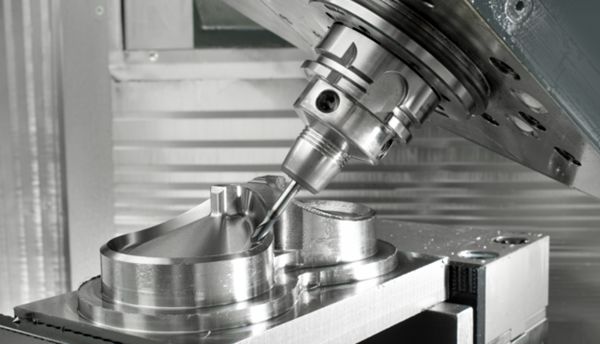
Multi-axis CNC Milling
These multiple-axis machines equipped with milling capabilities allow the manufacturing of complex robotic surgery equipment and robotic surgical instruments in a single set-up. It reduces manufacturing time and produces cost-effective products. As we know, milling machines work by employing rotary cutters that remove materials by advancing the cutters along a specified path. Other than cutting, milling processes include drilling, reaming, etc. All processes are utilized to produce a surgical robot component.
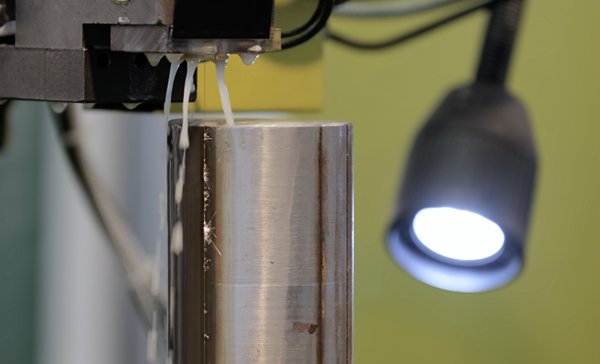
Electro Discharge Machining (EDM)
EDM is a type of advanced machining process, specifically capable of delivering a highly precise, micro-intricate product without compromising on quality. As an assist machining technique, the process includes removing material from a part employing a series of repeated electrical discharges between tools, called electrodes, and the part being machined in the presence of a dielectric fluid.
Machining surgical robots are concerned with small and complex dimensions. EDM assists in achieving precision machining during robotic surgery part production, thereby fulfilling the required specifications. This way manufacturers prevent complications in the assembly and functioning of surgical robots.
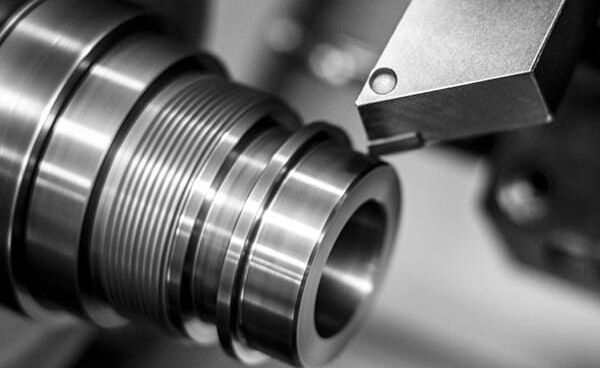
Precision Turning
Precision turning operation includes machining in which the workpiece rotates at high speeds while a fixed cutting tool removes material. The output of this machining process is a cylindrical shape. In addition, precision turning enables the machining of parts with very small tolerances and dimensions with high precision. These cater to machine parts and components during surgical robot production, which the milling cannot produce.
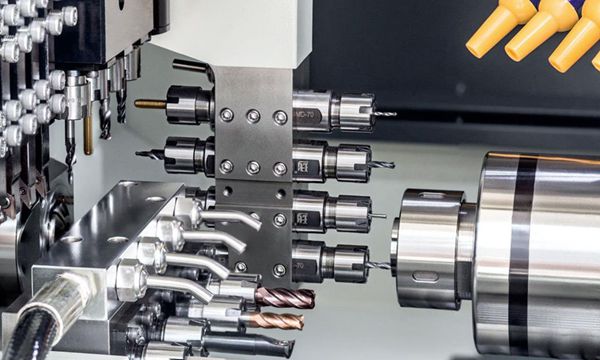
Swiss Machining
It is known for producing extremely small, precise parts at a fast pace, the machines consist of a tool that moves back and forth producing specific, required shapes with accurate measurements of micrometer precision. Due to its relatively faster machining time, it results in quicker turnarounds.
In addition to that, swiss CNC machines can perform multiple operations in one setup, producing a batch of miniature complex medical robot parts with little to no error.
Unique Requirements for Surgical Robots in Machining
Surgical robotics are very high-precision medical equipment and vital devices to deal with surgery. Usually, surgical robots are equipped with robotic arms and control centers. These components require tight tolerances of dimensions and geometries. Therefore, in the machining process of those relevant parts, manufacturers must pay great attention to two aspects – how to achieve tight tolerances and how to accurately inspect.
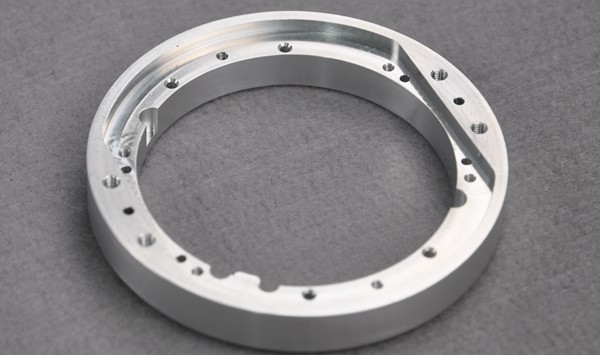
Precision and Accuracy
When dealing with the highly complex and intricate systems of the human body, the devices manufactured and employed, include surgical robots, robotic implant placements, and robotic surgical instruments. All these components need to be precise and accurate. Therefore, during surgical robotic part production, such precision machining is to be employed which can produce uncompromisingly high complex geometries and intricate parts, with tight tolerances.
Assembly
Surgical robots are a group of intricate robotic arm components that are assembled. Therefore, for each assisted robot part, it is vital to ensure dimensions and tolerances. If each part abides by strict tolerances, only then the robot-assisted device will assemble perfectly. However, the failure to achieve it would have serious outcomes when operating and will result in medical fiascos.
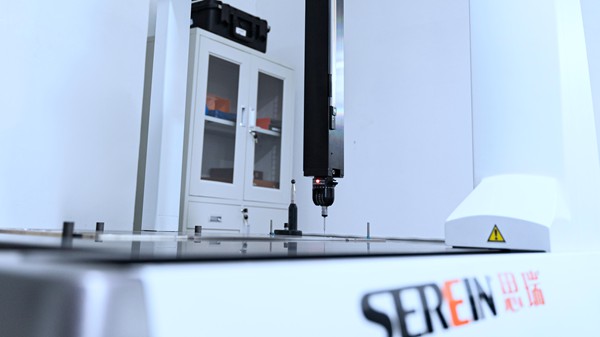
Inspection
Besides precision machining, inspections are equally important. There are various sizes of parts in surgical robotics, and it’s sometimes very challenging to conduct inspections for small-size parts. During manufacturing, there needs to be a detailed inspection of each of these assisted robot parts manufactured. Therefore, the quality department needs to carefully examine every piece on the spot to avoid failures later and improve the assembly.
In addition to that, ensuring the quality of products saves production costs and leads to a quick turnaround.
Why Choose CNC Precision Machining to Custom Surgical Robots?
Medical devices demand a guaranteed precise functioning ability. A tiny error by these robotic surgery devices, during operation, can cost a huge, therefore, there is no room for error. Additionally, dental robotic placements, surgical instruments, and robot arm components need to be produced with a high level of accuracy and repeatability. Precise cuts and shapes are also should be ensured.
CNC machines are known to provide highly accurate and precise machining, taking into account the tight tolerance and complex geometry. Here are some of the benefits of choosing precision CNC machining for robot part manufacturing.
Quick Turnaround
The computerized operation and the availability of several tools, allows CNC machines to execute more processes in the same setup, avoiding the downtime of shifting workpiece from one setup to the other. In addition to that, the computerized operation also ensures the right machining of the product, taking note of precise dimensions and tight tolerances. This, again results in saving time by the quality department.
As a result, precision CNC machining ensures a faster and more accurate execution of manufacturing processes, resulting in the faster production of a greater volume of custom surgical robots in less time.
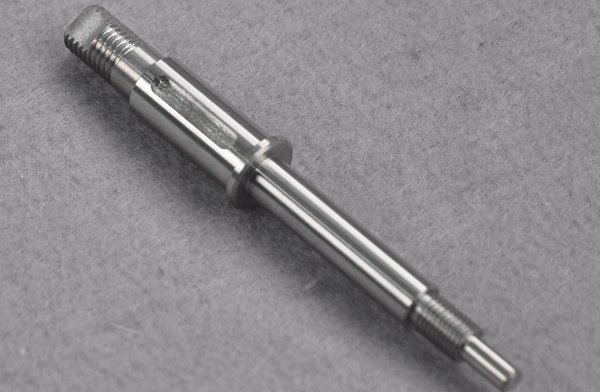
Consistency and Quality Assurance
Precision CNC machining guarantees consistent and high-quality output in every production run. The computerized control of CNC machines ensures that each component, whether it’s a robotic arm or a surgical instrument, is manufactured with identical specifications.
Additionally, it can be programmed to conduct strict quality control checks during the machining surgical robot process. This real-time monitoring helps identify any deviations from the specified dimensions, allowing for immediate adjustments and ensuring that only high-quality components are produced.
Versatility in Materials and Designs
CNC machines are available when it comes to working with various materials and intricate designs. Whether the surgical robot components require machining from metals, plastics, or composite materials, precision CNC machines can handle a wide range of materials with ease.
The ability to work with complex geometries is another advantage. Surgical robots often involve different designs to accommodate the necessary functionalities. CNC machining can precisely execute these complex designs, ensuring that the final components meet the exact specifications and good performance in a surgical setting.
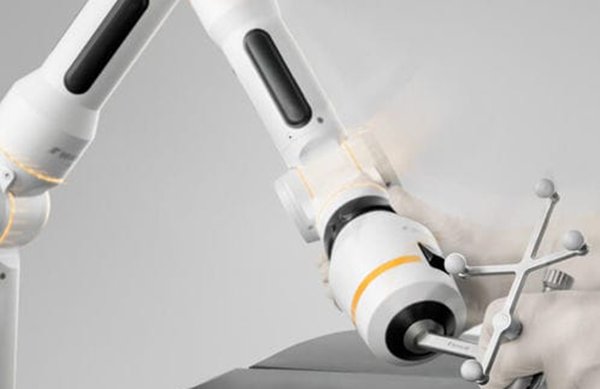
Ensure Assembly
For a surgical robot to be built, several parts need to be assembled. Each of these parts must fit perfectly, otherwise, the functioning and operations can be deadly. Given the micro-precision and computer operationalized capabilities, CNC machines enable and ensure each part machined, to be have the right dimensions and tolerances. Therefore, employing these machines helps attain the right assembly required for the surgical robots to execute their functions.
Cost Effective
CNC machines are capable of using raw materials more efficiently, minimizing waste. The precision and accuracy of CNC machining ensure that each component is manufactured with minimal material wastage, contributing to cost savings and environmental sustainability.
At the same time, the CNC quality department is set up to inspect the manufacturing of each part at every step, identifying on the spot, if rework is required. This way the changes are made on the spot, instead of reworking the whole product later on. Hence, the use of CNC machines during surgical robot part production allows cost control and increases profitability.
How to Make Precision Machined Parts for Surgical Robot Devices(with Cases)?
WayKen has been working with many medical companies that are making surgical robots. As explained earlier in this article, to produce surgical robots needs to achieve very tight tolerance. This is quite challenging in the prototyping and part-production phase. We’ve met and solved plenty of difficulties in the past and would like to share two cases.
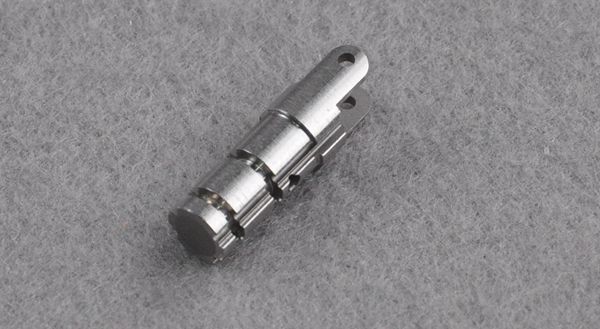
Case One: Machining Solutions for Critical Features and Dimensions in Robotic Surgery Part
Usually, surgical robots have relatively complex mechanical structures, therefore, some of the parts have tiny features that are not easily made. Here is a case about a small robotic part for surgery devices.
Key Features and Dimensions
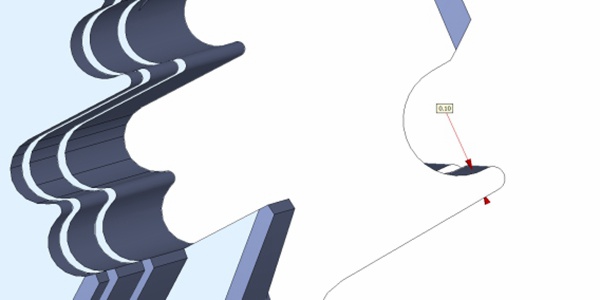
The above picture is a small Stainless Steel part from a surgery-assisted robotic arm. The size of the part is 7*7*22mm and it’s featured with sharp cuts and open slots around the edges. As revealed by the image, the thickness of the cuts is extremely thin, only 0.1mm.
During the early period of this project, we communicated with the customer in detail about the project requirements. We should keep in mind to produce all features as precisely as possible since these are critical for the surgical robot’s running. Because it is the key point to ensure for the whole project, there are many manufacturers that the customer contacted had refused to produce these robotic components due to high Scrap Rates.
Machining Solutions
As a matter of fact, WayKen also encountered a low Pass Rate during the trial machining phase. However, we didn’t give up. We thought every failed trial production told us how to improve and what to adjust to increase the Pass Rate. So, we tried to increase the machining time to process the small features more carefully, which could ensure the best tolerances.
In addition, wire-cutting was also added to the machining process, aiming to provide perfect surface quality and accuracy. The result of wire-cutting depends on a variety of factors including speed, fixture tools, positioning, and wire materials. For this production, WayKen’s engineers developed different processing strategies and adjusted positioning and fixturing tools several times to achieve the expected outcome.
Thanks to our years of experience and a highly skilled team, we produced these small Stainless Steel robotic parts and the final quality met our customer’s expectations.
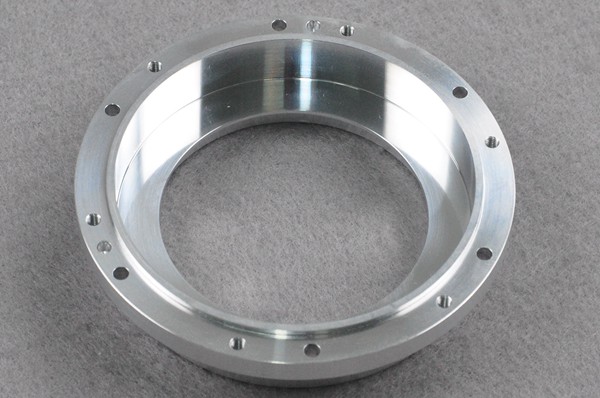
Case Two: How WayKen Ensure Particular Tolerances for Precision Surgey Robotic Components?
To the robotic arms for surgery, gearing parts like shafts and wrists are extremely important, as plenty of other components need to work with shafts. Qualified shaft parts can ensure the whole robot system working in good condition.
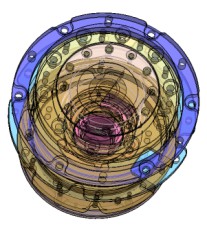
Total Runout in Machining
For the key fitting components in the transmission system for a surgical robot, there are a few particular geometric tolerances that need to be guaranteed, and total run-out is the key one. We will share a case to explain more about it.
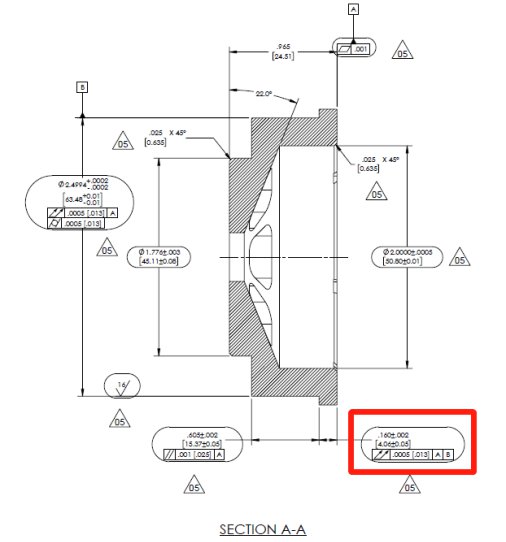
As the drawing shows, there are two types of total run-out – radial run-out and axial run-out, and both types of run-outs are given with very tight tolerances. It’s common sense that total run-out can control other GD&T, for example, perpendicularity, circularity, concentricity, and parallelism. Hence, as long as total run-out is well-controlled in the machining, the other dimensions can also be guaranteed.
Machining Route
As mentioned above, the key to achieving total run-out for the hole φ2.5 in the part is datum A. At the same time, machining datum A side and the hole φ2 becomes a critical start. So, we developed the following machining route for these machined surgical robot parts.
During the lathing machining, Wayken’s engineers did a perfect job to accomplish the machining of datum A side and also achieved the flatness. While datum A side is done, the part needs to be shifted and refixed at the lathing machine. If a large deviation happens during shifting, it will cause errors about concentricity and total run-out as well.
The lathing machine used throughout the manufacturing is precise enough, and a special fixture tool was applied to fasten the part for part shifting. By all means, our engineers were able to control the shifting tolerance within 0.01mm. Eventually, the important total run-out was achieved for holeφ2.5.
For the height of the step (4.06mm), the key to a successful production was the nonstop machining of the main cylinder body. As long as the overall cylinder is completed in one go-machining, the second total run-out can be well achieved.
the key to a successful production was the nonstop machining of the main cylinder body. As any stops during the machining process, the cylindricity could be affected. We also kept checking the deviation by using a dia indicator during lathing. This helped us ensure the final quality of the surgical robot parts, too.
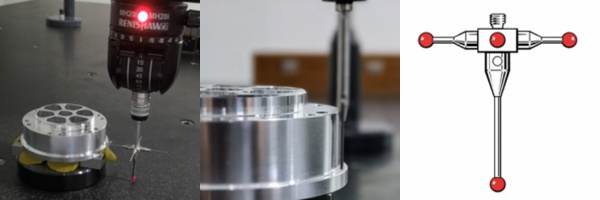
Ensure Inspection and Delivery Standard
Apart from achieving the precision robotic surgery parts, inspection of run-out can be challenging as well. When Wayken’s QC was trying to inspect this fitting part in the transmission system for a surgical robot, the step surface was not sufficient to implement the final QC check with CMM.
The root problem was the probe of CMM was too large to proceed with inspection and receive accurate results. To address this problem, we purchased a unique probe from RENISHAW called “STAR”, which is featured with a smaller pin head. The new inspecting tool helped our final QC perform very well.
Eventually, WayKen successfully delivered all the components according to our customer’s requirements. Furthermore, The customer told us that the testing of these components for the surgical robot arm went very well.
Materials Available in Machining Robotic Surgery Devices
Depending on the different parts of robotic surgery devices, the materials are various. Actually, both metal and plastic materials can be used to produce robotic surgery devices. The following will list some examples of metal and plastics.
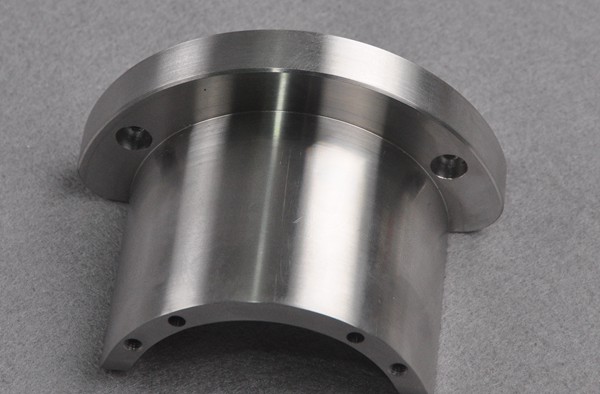
Stainless Steel
The most frequently used metal material in all medical device parts that WayKen has produced is Stainless Steel. To be more specific, SS630, SS316, and SS304 are the most popular stainless steels. That’s because they have perfect corrosion resistance which helps to create durable parts for devices.
As well as. stainless steels are suitable for high-precision machining, and tight tolerance is usually required for medical equipment.
Aluminum
Apart from Stainless Steel, Aluminum alloys are the second most widely used material for those devices, such as AL7075-T6 and AL6061-T6. They are applied to produce the parts that need to be lighter than Stainless Steel, and solid such as handles, housings, and supporting sections.
Plastics
Compared to metals, plastics are less used in the production of surgical robots, however, they are perfect for preliminary design verification. CNC, SLA, and SLS are the three suitable technologies to choose from for design verification.
CNC machining has the most material options among the three technologies. There are ABS, Nylon, PEEK (with GF), PEI, etc to pick for different components. If there is no need for precise tolerance, SLA and SLS will be more appropriate methods. Because both SLA and SLS are extremely efficient and cost-effective for early design verification.
Surface Finish Options for Machined Surgical Robot Parts and Components
For medical surgery equipment, practicality and safety are the most important factors to consider when it comes to surface treatment. Here we focus on aluminum and stainless steel, which have different surface treatment options in actual production.
Passivation is quite often applied to Stainless Steel. The aim of passivating is to add an extra coating on the surface of the material and enhance the corrosion resistance. Speaking of anti-corrosion, Aluminum-made parts also need the necessary methods to be anti-oxidation. Anodization is a good way. After the anodizing process, Aluminum materials will be coated with an additional oxide layer that prevents the part from further chemical reactions to the surface.
Considerations When Choosing a CNC Manufacturer for Your Surgery Robot Projects
Custom-built surgical robots have some definitive applications, which include implants, robotic surgical instruments, and dental. Choosing the correct CNC manufacturer is vital for the success of your surgical robot projects as these components require high-quality standards during CNC machining operations.
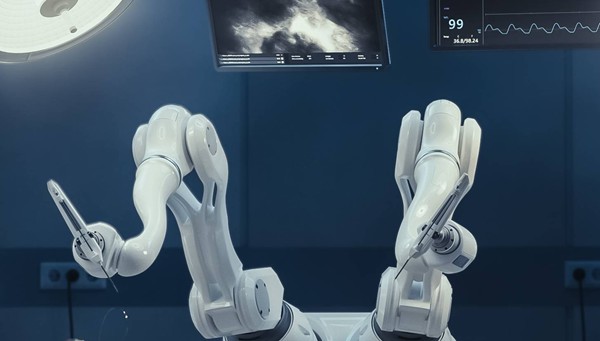
Materials Expertise
Manufacturers need to have the ability to produce precisely machined assisted robot parts, using a diverse range of materials and alloys. This can be done by employing optimized machining technologies. In addition to tight tolerances, complex shapes are to be achieved, no matter the challenge of medical-grade material being used.
Comprehensive Processing Capabilities
ne-stop and comprehensive machining capabilities are to be offered by a reliable manufacturer. These include precision machining, post-finishing, and strict quality control. In order to ensure such capabilities, precise machining equipment has to be present. These include EDM machines, multi-axis CNC machines, CMM machines, etc. These machining techniques and equipment ensure surgery robotic end-products have good quality with tight tolerances and precise dimensions.
Finishing and Assembly
The surgical robots manufactured consist of several complex parts and control systems, grouped. In order for the devices manufactured, to ensure the right operation and functioning during their applications, the parts manufactured need to fit together well. CNC manufacturers should be made certain by verifying that each product has a good appearance and perfect assembly together.
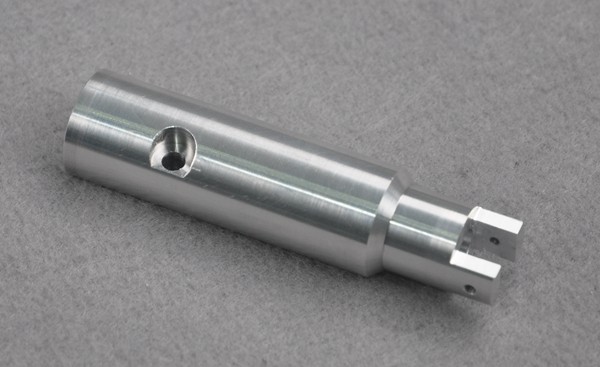
Quality Assurance
The products manufactured should be of the highest quality standards. The quality can be categorized as dimensional quality, or aesthetic quality (uniformity). Once machined, the product goes through an inspection department that carries out careful checks of the dimensions and tolerances of each surgical robotic component.
In addition, CNC manufacturers should check the surface uniformity of the robotic products. This will assure a good quality production that satisfies the client while increasing efficiency and quick delivery.
WayKen's Macchining Capabilities for Robotic Surgery Parts and Components
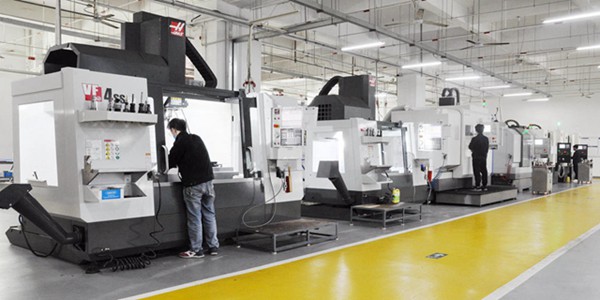
At WayKen, We have extensive experience in machining parts and components for surgical robots. Our team is highly skilled in the production of intricate, difficult-to-manufacture, tight-tolerance robotic prototypes, parts, components, and devices.
As an on-demand manufacturer, we also produce various parts and components in a diverse range of materials and alloys using many optimized manufacturing processes and machining technologies, including custom CNC machining, 5-axis milling, precision turning, EDM machining, anodizing, passivation, etc.
In addition, WayKen is committed to developing our processes and manufacturing to better serve the customers from the medical industry. We’ve obtained and kept ISO 9001 and ISO 14001 certifications and we believe our management system and manufacturing service meet the different requirements in the surgery robotics sector. Contact us today to start your projects!
Conclusion
Custom surgical Robots are developed to enhance the surgeries, either by aiding in the procedures carried out by medics and surgeons, or by robotic dental implant placement in the human body. To allow accurate movement and motions, such robotic surgery instruments and robotic surgery equipment consist of precise dimensions and tight tolerances, given the complex functioning.
FAQs
What are surgical robots?
Surgical Robots are precise assisting devices that aid surgeons and medics to perform complex surgeries, such as orthopedic surgeries. They are often equipped with robotic surgery equipment, eg. a camera and magnifier to zoom into the body, and advanced and precise robotic surgery instruments including forceps, scalpels, and computerized functions, allowing planning and rendering.
How can CNC aid in precision manufacturing?
CNC machines, also known as computer numerically controlled machines perform highly precise manufacturing. These machines are programmed to consider one hundredth and thousandth of a millimeter. Multi-axis milling machines, Swiss CNC machining, and EDM machining are examples of processes that ensure micro-precise machining, manufacturing miniature parts with extreme precision.
Why precision machining is important?
Surgical robots are to be employed in the human body, known to be complex and intricate. The robotic surgical instruments and robotic implant placement that are to be used need to be uncompromisingly precise, critically checked, and ensured. A failure to achieve this could be fatal.

